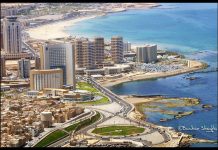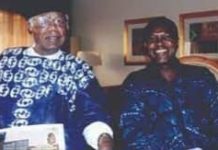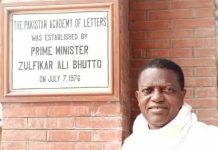We descended into Istanbul a few minutes after daylight just as the early morning sun set the eastern horizon ablaze with a golden haze.
From the air, high rise buildings, spikes and minarets of mosques and cathedrals bathed in the early morning sun appeared as grey silhouettes against the fast approaching smudge of land. Then suddenly, we were under the clouds and beneath us laid an enormous sea as it stirred in the early morning sun with colourful boats, yachts and merchant ships bobbing on its smooth blue surface.
This colourful flotilla was followed by a landscape pimpled by clusters of tall buildings interspersed with rivers, wide boulevards and the shoreline of the sea of Marmara on to a serpentine road network that slithered between residential and commercial buildings like snakes in search of preys.
Welcome to Istanbul, Turkey’s economic, cultural and historic centre as well as the bridge between Europe and Asia.
Despite the sunshine that seeped through the aircraft windows, we were informed that the outside temperature was 12 degrees Celsius.
As the Turkish Airlines Flight TK 624 from Abuja to London en route Istanbul finally taxied to a halt at the arrival hall of the Ataturk International Airport, I mused over the fact that I had a five hour wait in Turkey before my departure to London. Fortunately, I was informed that with a modest fee, I will be issued with a Visa which will give me the opportunity to enter Istanbul.
With another fee, I was able to hire the services of a taxi with a tourist guide for a three- hour sight- seeing of the Turkish commercial city.
Istanbul has been a city for over twenty seven centuries.
Historically known as Constantinople and Byzantium, it is the most populous city in what is modern-day Turkey. It is also a transcontinental city in Eurasia, straddling the Bosphorus strait (which separates Europe and Asia) between the Sea of Marmara and the Black Sea. Its commercial and historical centre lies on the European side and about a third of its population lives on the Asian side.
With a population of 15 million people, Istanbul is one of the world’s most populous cities and ranks as the world’s 7th-largest city proper and the largest European city.
A major cosmopolitan city, Istanbul has over the ages welcomed all and sundry from writers to vagrants, musicians and rebels. TS Eliot, James Joyce, Paul Theroux among other famous writers have all preceded me to the historic city.
In his famous book; The Great Railway Bazaar, Paul Theroux, the well -known travel writer put the matter beyond any doubt when he observed thus; ‘’Istanbul is a total slut- it doesn’t turn anybody away’’.
As I threaded my way out of the arrival hall with the usual hustle and bustle of arriving passengers, customs and immigration officials as well as a throng of relatives and friends, I was welcomed into Istanbul by the brilliant sunshine of a spring morning.
On sighting a dollar note visible from my front shirt pocket, my Tourist Guide, Atilla asked me to tuck it in apparently to forestall being a victim of pickpockets.
Moments later, as Atilla drove me into Istanbul City, we ran into a heavy traffic which slowed our journey. ‘’Rush hour traffic’’ noted my guide before pointing out the Marina side of the Marmara sea with all its glittering high rise apartments which he said cost millions of dollars to buy.
More modern buildings followed including hotels among which were the Sea Pearl Atakov Hotel, the Hyatt Regency and the Galleria Mall among others. All these edifices and other corporate offices I was told, belonged to the ‘new city’.
Before long, we chanced upon the Old City Wall with its historic buildings such as the Blue Mosque, and the Topkayi Sarayi. According to Attila, ‘’Old Istanbul begins as you pass the City wall at the Golden Gate, the Arch of Triumph of Theodosius (built in 380)’’.
At the Old Castle, we turned off the main road to narrow paved roads with outdoor Cafes and Bars including the Sultanahmet where I found myself in the midst of a colony of other tourists mostly elderly Asians snapping away with their expensive looking cameras. It was here at the Arasta Bazaar that I bought some exotic Turkish Spices and Tea with some souvenirs. Ahmed, the shop owner went out of his way to introduce me to his wares.
As he put it; ‘’We have all types of teas from Jasmine to Diet Tea and Slimming tea. We also have teas for treating all types of diseases such as Cholera, TB, Asthma and Diabetes’’. Then with a wink in his eyes, he brought out a brownish package; ‘’ This is for real action. We call it the Viagra Tea’’.
My first encounter with Istanbul was through the Turkish novelist and Nobel Laureate, Orhan Pamuk’s 2004 fictionalized memoir, Istanbul: Memories of a City where I was introduced to Istanbul’s unique culture and tradition. It was Pamuk who also introduced me to Mustafa Kemal Ataturk, widely regarded as the father of the Turk nation.
Apart from the airport which was named after him, everywhere one goes in Turkey, one sees photographs, portraits and statues all in his name. He is on Billboards, Stamps and Coins while his name is given to streets and plazas. Ataturk who came to power in 1923 declared Turkey a Republic, closed down all religious schools and introduced the Latin alphabetic. He died in 1938. It is said that modernization stopped in Turkey at the death of Ataturk.
Some of the major attractions in Istanbul are the city’s numerous shopping centres, from the historic to the modern.
One of them, The Grand Bazaar, in operation since 1461, is among the world’s oldest and largest covered markets. On my arrival at the Grand Bazaar, I was offered a glass of delicious tea, an important part of Turkish culture which is a sign of the hospitality of the Turkish people.
It was also at the Bazzar that I was introduced to another Turkish delight, the Baklava a very sweet dessert favoured by Turks and Tourists alike. ‘’We Turks have a very sweet tooth’’ was Attila’s response when I complained about the high sugar contents of the tea and Baklava. He also informed me that the Grand Bazaar which is as old as 500 years, has 3000 shops and 61 cobbled streets and is visited by an average of 250,000 people every day.
Apart from the Baklava, another popular snack in Istanbul is boiled corn which is sold from push carts inside which electric cookers have been installed. When I wanted to try the snack, my guide discouraged me saying that boiled corn was only eaten by poor people!!
Another important Turkish Landmark I got from Orhan Pamuk’s novel was the Bosporus River. So enchanting was Pamuk’s description of the famous river that I was determined to visit the famous landmark.
Because of the limited time at my disposal for the sightseeing, Attila suggested that we use the Tram for our trip to the river in order to avoid the heavy traffic around at that time of the day.
My last encounter with the Tram was in the late 70s when I travelled to Alexandria, Egypt for a Medical students Conference. It was therefore with a lot of nostalgia as I accompanied Attila to the Tram station.
I was expecting to be asked to buy a ticket but was surprised when Attila used his pass for our access. His explanation was that Tourist Guides are allowed to use their official pass for tourists. As we waited for the Tram’s arrival at the Tram station, I noticed that most of the instructions at the station were in English and Turkish.
It was a five coach tightly packed tram that we boarded five minutes later at Gulhane Station. I also noticed that I was the only black in my coach with many of the Turkish women wearing western dresses without the traditional veils expected as is the practice in many Muslim countries. From Gulhane, the Tram passed through Sirkeci station and on to the Metro Bridge where we disembarked.
I was expecting a small river with visible banks and shallow waters. However, what I saw as the Bosporus River was way beyond my imagination. It was like an ocean and for the first few seconds, I remained transfixed with awe at what befell my eyes.
I was told that the Bosporus River which unites the Black sea and the sea of Marmara and separates the continents of Europe and Asia is 19 miles (30km) long with a width of 2.3 miles (3.7km) As the only sea route between the oil-rich Black Sea and the Mediterranean, the Bosphorus is one of the busiest waterways in the world. More than 200 million tonnes of oil pass through the strait each year, and the traffic on the Bosphorus is said to be three times that on the Suez Canal.
Even though it was still about ten in the morning, the River, calm and full was already busy with activities. At the riverside, tourists and their guides could be seen all over the place enjoying the scenery as well as the riverside restaurants, bars and cafes.
High above, a leisurely group of the young and the old leant over the bridge barriers with their long fishing rods as they tried to catch some fishes from the river below.
Startled by an approaching sound of loud music, I looked up to see gaily decorated Tourist boats with music blaring from their cavernous interiors cruising on the river with their gargles of passengers clicking away with their cameras. Far beyond the horizon could be seen small fishing boats side by side cargo freighters with rusty hulls as they floated away in the glittering water.
As I took in the whole beautiful spectacle, I felt at peace with myself but was worried in case I overstayed and miss my flight to London.
However, Atilla my guide reassured me. ‘’We still have some more time’’ he said as we sipped the ubiquitous sweet Turkish tea from one of the numerous sea side cafes where we sat under an umbrella.
‘’Istanbul has many wonderful places to visit, unfortunately, you don’t have enough time to see them’’ my guide lamented. ‘’For example, you need to see the Asian and European parts of the city which the Bosporous has evenly divided into two. On the right side of the River is also the Selimiye barracks where Florence Nightingale attended to wounded soldiers during the Crimean war.
Towards our left, Austria is just about an hour away by boat. Then at night, the river comes alive with music and dancing. You know that Istanbul is famous for its nightlife with plenty of taverns, pubs and cafes playing live music’’
Then turning to me with a boyish grin, he said; ‘’Why don’t you stay the night. I can help you to postpone your flight till tomorrow. London is cold and miserable. I understand it is snowing there now. But here, Istanbul is warm and lively. Stay the night. I will make sure that you enjoy yourself’’ he said.
When I told Attila that I won’t be able to stay back because of some very urgent issues awaiting me in London, he said; ‘’in that case, you need to come again, this time with your family, maybe for about three weeks or more. You can’t really do justice to Istanbul in three hours’’
After a quick snack and another cup of tea which cost 5 Turkish Lira (3.1 lira is equal to 1 USD), at the Galata situated in the Sultanhnet, we headed back to the airport.
In order to avoid the heavy traffic, Attila decided to drive through the back roads where I saw the other side of Istanbul.
Far different from the glittering high- rise buildings and posh hotels by the water side, I saw run down and in some cases, dilapidating residential buildings in front of which some elderly men whiled away the time. With just a few kilometres to the airport, we ran into a youthful crowd of placard carrying men and women.
‘’Are they demonstrating against the government?’’ I asked Attila.
‘’No, not against the government’’ Attila replied. ‘’They are angry with the US over her interference with the war in Syria’’.
When I mentioned that some people are not happy with the way President Erdoga seemed to have turned Turkey from a progressive, secular and democratic republic as engineered by Ataturk into an almost hard-line Islamic State, Attila would have none of it.
‘’Erdoga is doing very well. We all love him. You can see by yourself how peaceful and beautiful Istanbul is. It is like that all over Turkey’’ was his response.
From Erdoga, I shifted my attention back to Attila who had now increased the speed of his car as we headed back to the airport. Thankfully, the traffic was light and we made our destination on time. Moments later, the Turkish Airlines Flight TK 1985 to London Heathrow took off from the airport’s Terminal 1.
From the aircraft, I looked out the window at the fast receding Istanbul’s sunny skyline as my thoughts went to cold, freezing London where I was told the temperature was below 5 degrees Celsius.
Suddenly, I wished I had taken Attila’s advice and stayed for the night in the land of the minarets, spices, sweet tea and the elegant Bosporus river.
*Dr. Wale Okediran is the Secretary-General, Pan-African Writers Association (PAWA)















